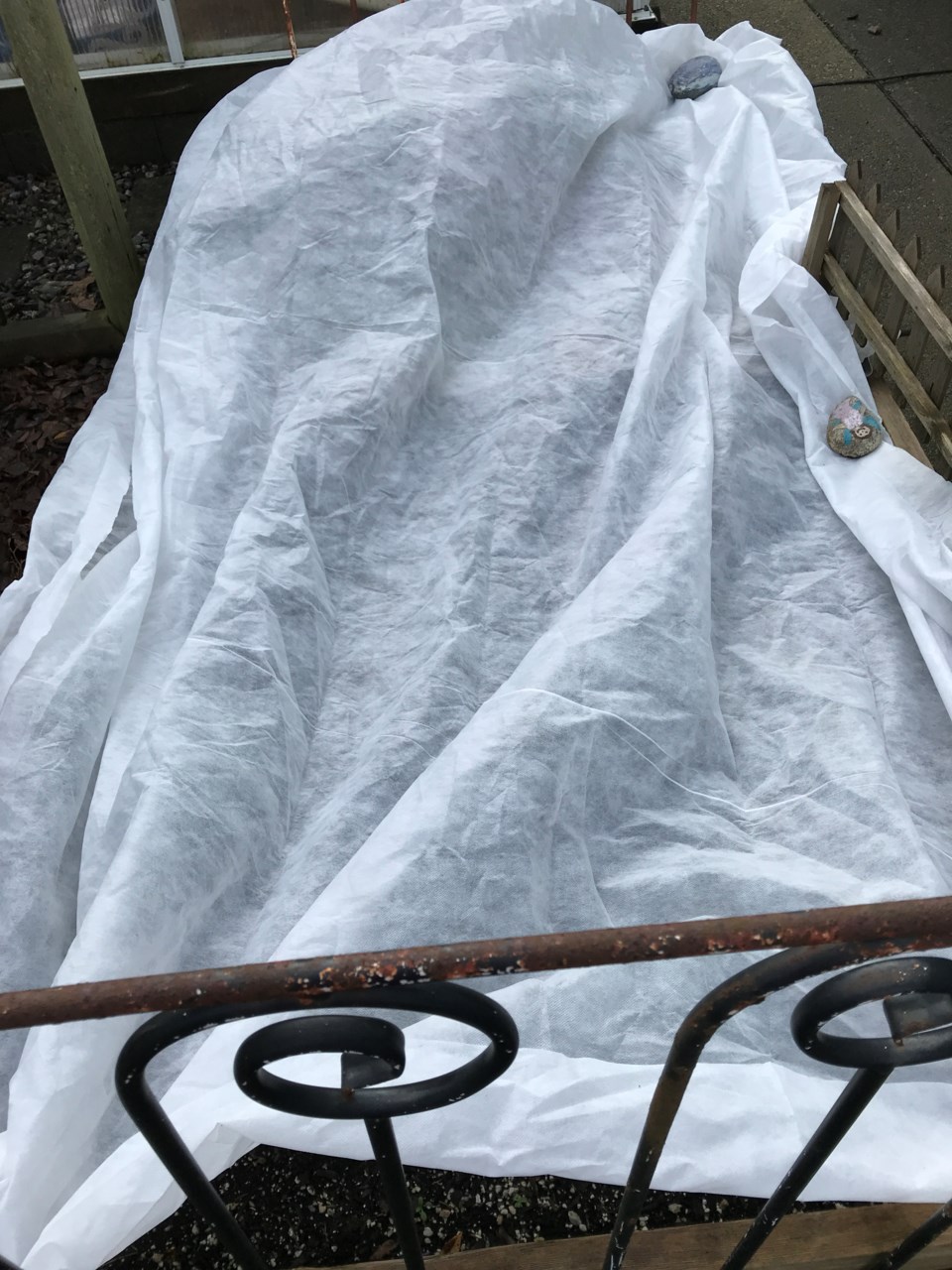Winter is here and it’s time to think about protecting your plants in the garden.
One easy way to protect your plants from winter cold is to use leaves around them to help protect the root system. Save your leaves in the fall and gently place them around the base of tender plants for protection. Use leaves as a mulch on raised beds. Not only will the leaf cover prevent soil loss, it also adds nutrients to the soil and protects your plants.
If you don’t have leaves there are alternatives for winter protection. Many gardeners place plastic nursery pots or cloches over prized plants for protection. Some gardeners use evergreen boughs over the garden as a layer of insulation against the cold.
To help protect plants in raised beds or in ground gardens I recommend heavy weight floating row covers. Place the covers over your plants and use rocks or bricks to hold them in place. Be sure to allow some extra fabric over the plants as they grow although most winter crops grow very slowly. Floating row covers can be found at most garden centres.
The best insulation you can hope for is snowfall. Snow acts like a blanket over the garden adding a protective layer before extreme cold arrives. Here the snow arrived before our temperatures dipped to -13C. If it had been the other way around I’m sure we would have plant loss. Although snow is beneficial for the garden it’s best to gently remove it from evergreens so branches don’t break under the weight.
How do you know which plants need protection? We live in zone 8a so plants from zones 8-10 or higher will need to either come inside or be protected.
For example, some banana trees are not hardy in our climate and benefit from being wrapped to protect the crown of the plant. Rosemary is only hardy to zone 8, so it’s right on the borderline of hardiness. I usually bring my rosemary plants close to the house if they are in containers or cover the plants that are planted in the ground with a floating row cover. If you have tender plants in containers they should be brought inside a garage or shed for the short-term until temperatures are safe for them to go outside again. If you can’t move your containers wrap them in burlap to not only protect the plants but the containers as well. Many containers are subject to cracking from winter cold.
Most winter damage will not show up until early March, so don’t be too hasty to discard plants once winter is over. Plants may take a bit longer to recover from our low winter temperatures. Sometimes we push the boundaries in the garden by using plants that are not hardy. I think with our extreme weather events that it’s time we had a conversation about plant selection for a changing climate.


